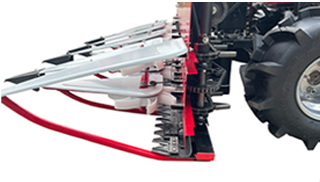Oct . 11, 2024 14:12 Back to list
rear brake drum removal
A Step-by-Step Guide to Rear Brake Drum Removal
Removing the rear brake drum is an essential skill for any DIY car enthusiast or a necessary task for professional mechanics. Whether you're replacing worn brake shoes, changing wheel bearings, or just conducting routine maintenance, knowing how to properly remove the brake drum can save you time and money. Here, we will outline the steps involved in safely and effectively removing a rear brake drum.
Tools and Materials Needed
Before starting, ensure you have the following tools and materials handy - Jack and jack stands - Lug wrench - Brake drum puller (if necessary) - Screwdriver (flathead) - C-clamp or brake tool - Cleaning solvent - New brake shoes (if required)
Step-by-Step Instructions
1. Safety First Begin by ensuring the vehicle is on a flat surface. Engage the parking brake and place wheel chocks in front of the front wheels to prevent the vehicle from rolling.
2. Lift the Vehicle Using a jack, lift the rear of the vehicle until it is high enough to remove the wheel. Place jack stands under the vehicle for safety, as a jack alone can sometimes fail.
3. Remove the Wheel Using a lug wrench, loosen and remove the lug nuts. Take off the rear wheel to expose the brake drum.
4. Inspect the Drum Before you proceed, take a moment to inspect the brake drum. Check for any signs of wear, such as deep grooves or scoring, that may indicate replacement is necessary.
rear brake drum removal

5. Remove any Retaining Clips Some brake drums are held in place by retaining clips or screws. If applicable, remove these components with a screwdriver. Keep these pieces together for reinstallation.
6. Using a Brake Drum Puller If the drum does not easily slide off, you may need to use a brake drum puller. Attach the puller to the drum according to the manufacturer's instructions, making sure it’s securely fastened. Slowly tighten the puller’s handle to apply pressure until the drum pops off.
7. If It's Stuck In some cases, the drum may stick due to rust or grime. Gently tapping around the edge of the drum with a hammer can help dislodge it. Ensure you hit the drum lightly to avoid damage.
8. Removing the Drum Once the drum is free, gently slide it off the wheel hub. Be cautious, as the brake shoes may still be attached.
9. Inspect Brake Components After removing the drum, inspect the brake shoes, hardware, and wheel cylinder for any signs of wear or leakage. This is a good time to clean any dirt or debris from the area using a suitable cleaning solvent.
10. Reinstallation When you’re ready to reassemble, simply reverse the steps above. If you have replaced the brake shoes or any hardware, make sure to install them according to specifications.
11. Final Checks Once everything is back in place, replace the wheel and hand-tighten the lug nuts. Lower the vehicle and then fully torque the lug nuts in a crisscross pattern to ensure they're evenly tightened.
Conclusion
Removing the rear brake drum is a straightforward process that requires careful attention to detail and safety. With the right tools and a little patience, you can complete this task effectively. Remember, always consult your vehicle's service manual for specific instructions and torque specifications. Regular maintenance will ensure your braking system remains in good condition, promoting safety on the road.
-
Scania Brake Drums: OEM Quality for Optimal Safety & Durability
NewsAug.16,2025
-
R.V.I: Advanced Remote Visual Inspection for Precision
NewsAug.15,2025
-
Discover HYUNDA: Innovative Vehicles, Equipment & Solutions
NewsAug.14,2025
-
R.V.I: Unlock Advanced Insights & Real-time Performance
NewsAug.13,2025
-
Kamaz Brake Drum: Durable & Reliable for Heavy Duty Trucks
NewsAug.12,2025
-
Heavy Duty Iveco Brake Drum - Premium Quality & Safety
NewsAug.11,2025
